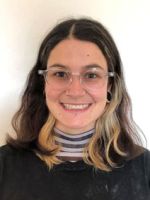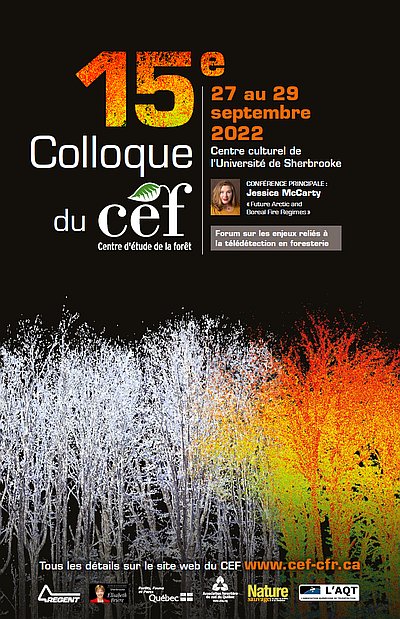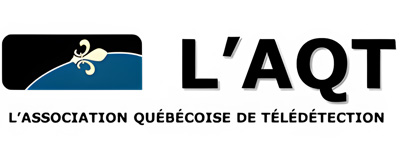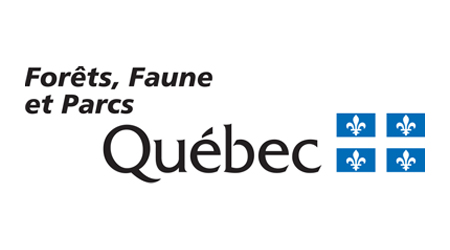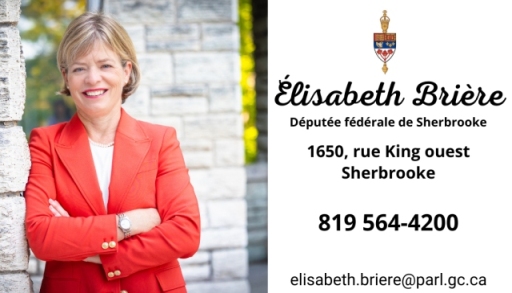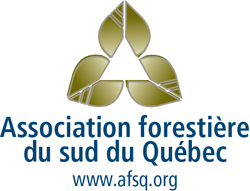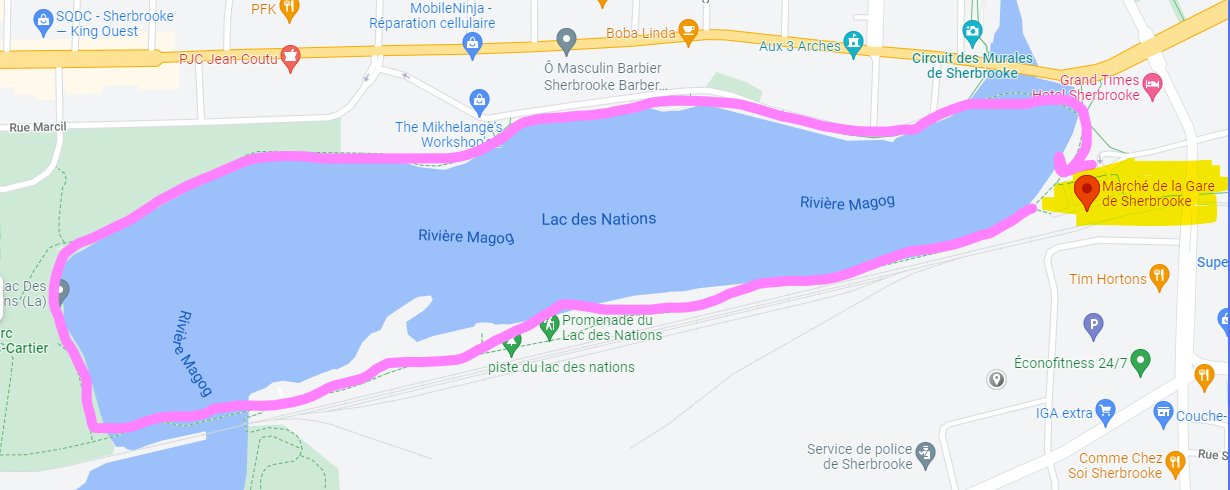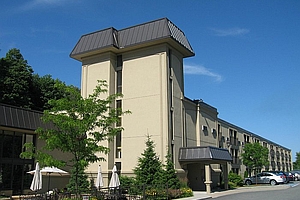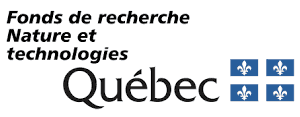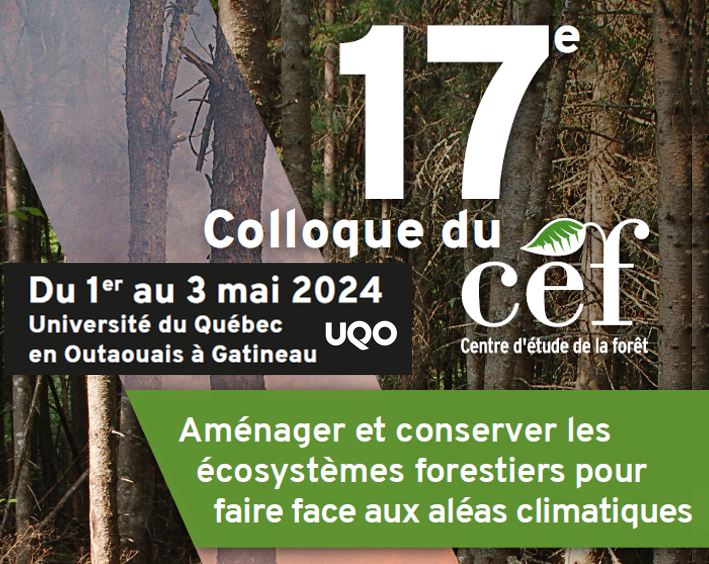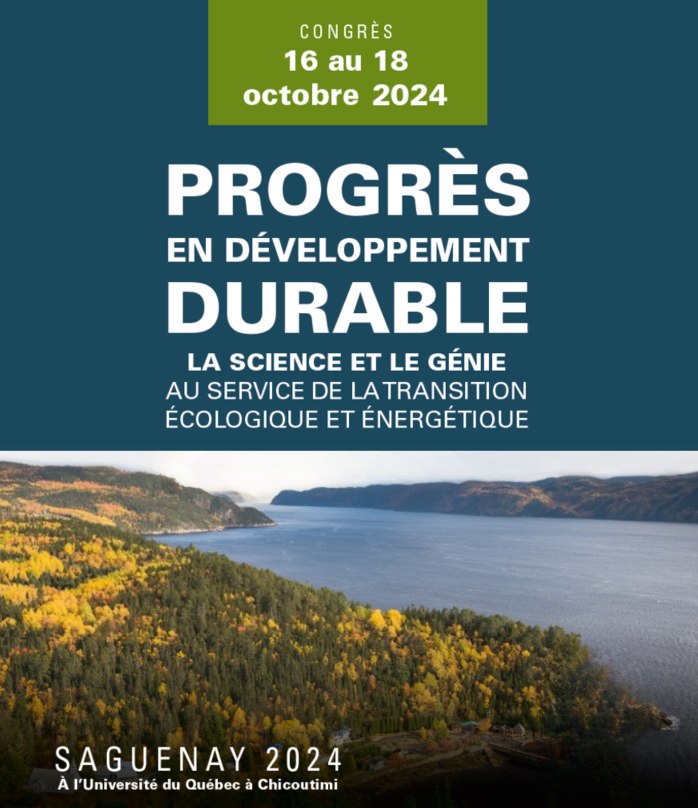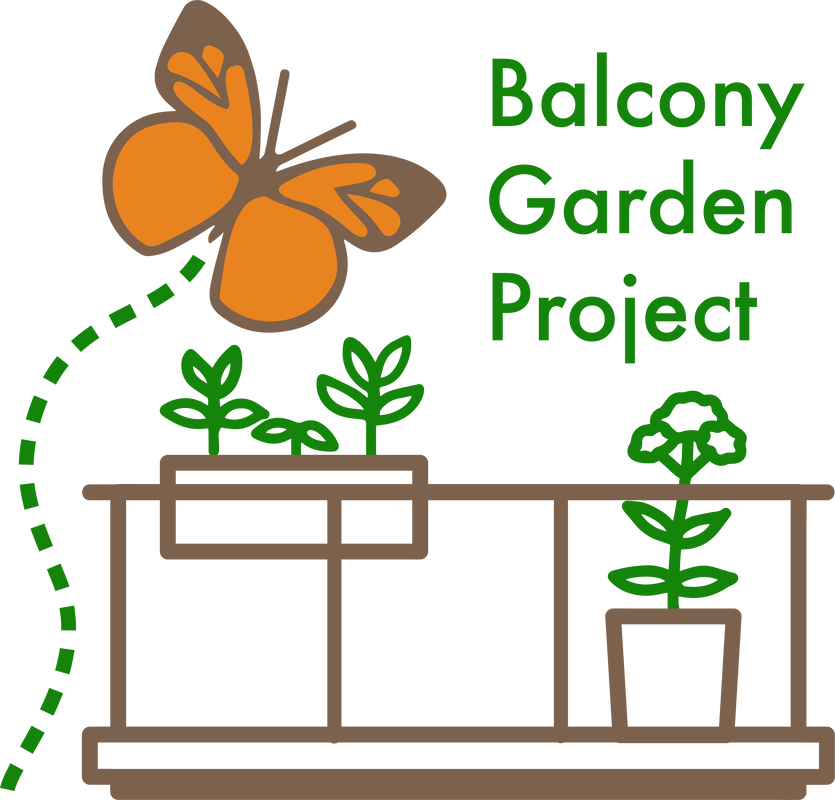
15e Colloque du CEF
Ça y est! Enfin! Le CEF est ravi de vous convier à son premier Colloque annuel en mode présentiel depuis trois ans! Les conférences auront lieu au Centre Culturel de l’Université de Sherbrooke ![]() les 28 et 29 septembre 2022. Une journée d’atelier de formation précèdera le Colloque le 27 septembre.
les 28 et 29 septembre 2022. Une journée d’atelier de formation précèdera le Colloque le 27 septembre.
Vous aimeriez partager les résultats de vos projets de recherche et discuter avec des chercheurs dans votre domaine d'étude? Vous souhaitez développer votre réseau de contact dans le domaine des sciences forestières? Vous avez envie d’enfin voir vos collègues en chair et en os? Le Colloque du CEF est une occasion extraordinaire d’échanger avec les membres de la communauté de la recherche en science forestière au Québec. Il est ouvert à tous les membres du CEF et à ses partenaires.
Programme préliminaire
| Mardi 27 sept | Mercredi 28 sept | Jeudi 29 Sept | |
| AM | Ateliers de formation |
| |
| PM | Ateliers de formation |
| |
| Soirée | Activités sportives et sociales | Activités sportives et sociales |
Conférence principale
Jessica McCarty ![]() est professeure associée de géographie
est professeure associée de géographie ![]() à l'Université de Miami à Oxford, Ohio, aux États-Unis et a plus de 15 ans d'expérience dans les applications de la télédétection et des sciences géospatiales cherchant à mesurer les incendies de forêt et d'origine naturelle et humaine, les émissions de feu, et les ressources forestières et naturelles, l'agriculture et la sécurité alimentaire, et le changement d'occupation / d'utilisation des terres (land cover / land use). Elle est chercheure principale financée par la NASA et auteur ou co-auteur de plus de 30 articles de journaux révisés par les pairs
à l'Université de Miami à Oxford, Ohio, aux États-Unis et a plus de 15 ans d'expérience dans les applications de la télédétection et des sciences géospatiales cherchant à mesurer les incendies de forêt et d'origine naturelle et humaine, les émissions de feu, et les ressources forestières et naturelles, l'agriculture et la sécurité alimentaire, et le changement d'occupation / d'utilisation des terres (land cover / land use). Elle est chercheure principale financée par la NASA et auteur ou co-auteur de plus de 30 articles de journaux révisés par les pairs ![]() , de quatre citations de jeux de données et d'un transfert de technologie de la NASA. Elle est membre du Arctic Monitoring and Assessment Programme
, de quatre citations de jeux de données et d'un transfert de technologie de la NASA. Elle est membre du Arctic Monitoring and Assessment Programme ![]() 's Expert Group on Short-Lived Climate Forcers du Conseil de l'Arctique
's Expert Group on Short-Lived Climate Forcers du Conseil de l'Arctique ![]() , contribue à l'étude Arctic Black Carbon impacting on Climate and Air Pollution (ABC-iCAP), financée par l'Union Européenne, et a co-développé les méthodes de calcul des émissions lors d'incendie utilisées par l'Agence de protection Environnementale des États-Unis pour l'inventaire américain des gaz à effet de serre et l'inventaire national des émissions. À l'été 2022, elle a été nommée gestionnaire de programme associée pour le programme Earth Science Applied Sciences Wildfires de la NASA.
, contribue à l'étude Arctic Black Carbon impacting on Climate and Air Pollution (ABC-iCAP), financée par l'Union Européenne, et a co-développé les méthodes de calcul des émissions lors d'incendie utilisées par l'Agence de protection Environnementale des États-Unis pour l'inventaire américain des gaz à effet de serre et l'inventaire national des émissions. À l'été 2022, elle a été nommée gestionnaire de programme associée pour le programme Earth Science Applied Sciences Wildfires de la NASA.
Elle présentera:
Future Arctic and Boreal Fire Regimes
Wildland fires in the boreal and Arctic are increasing in frequency and severity, with extreme fire seasons documented across the Pan-Arctic in 2019, 2020, and 2021. Globally, human-caused and wildland fires above 60°N were larger sources of black carbon and methane than current modeled estimates of anthropogenic sectors. This talk will summarize recent and ongoing results from a recent Arctic Council expert group report as well as a current EU-funded project to understand the impact of fires in the High Northern Latitudes on air quality, black carbon emissions, and potentially emission inventories. It will highlight ongoing and needed collaboration of European scientists with U.S. and Canadian fire researchers. Several NASA programs, including NASA Wildland Fire Management and NASA FireSense, are seeking to understand and enhance collaboration between North American ecology and fire researchers and scientists, including geospatial data users. Issues of inclusion, diversity, and equity are inherent to understanding fire ecology and fire management in the High Northern Latitudes, including centering and deferring to Indigenous and local communities.
Forum sur les enjeux reliés à la télédétection en foresterie
Forum soutenu et coorganisé par l’Association québécoise de télédétection (AQT) ![]() dans le cadre de sa série Perspectives
dans le cadre de sa série Perspectives
La recherche d’information de qualité est centrale tant pour les inventaires forestiers que pour tout ce qui concerne le suivi par la modélisation. La télédétection a toujours eu un rôle important pour des données de qualité sur la forêt. Avec le développement de capteurs selon une vaste gamme de technologies, la télédétection offre actuellement tellement de choix qu’il est difficile de déterminer quelle solution est adaptée pour une recherche pointue ou pour la mise en place de procédures opérationnelles. L’AQT vous propose une discussion sur ce sujet d’une heure avec un panel d’experts provenant de quatre milieux.
| L'animateur | ||
| Richard Fournier est professeur Département de géomatique appliquée de l'Université de Sherbrooke depuis 2001. Il est spécialisé dans l’usage de la géomatique pour la gestion des forêts et des milieux naturels. Il est chercheur régulier au CEF et au CARTEL | 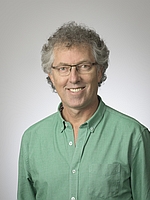
| |
|
Les invités | ||
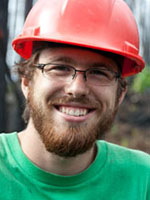
| Jean-Francois Bourdon est analyste en télédétection à la Direction des Inventaires Forestiers du Ministère des Forêts, de la Faune et des Parcs du Québec | |
| Maude Pelletier | 
| |
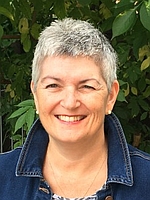
| Nathalie Perron | |
Programme des conférences
Les conférences auront toutes lieu au Centre culturel de l'Université de Sherbrooke (plan PDF ![]() ).
).
Programme des ateliers de formation du mardi 27 septembre
ATTENTION: Les ateliers auront lieu dans les bâtiments A3, A4 et A6 (alors que les conférence du 28 et du 29 ont lieu au Centre culturel - B3). Consultez le plan du campus interactif ![]() ou en format PDF
ou en format PDF ![]() .
.
Le programme détaillé des ateliers de formation est disponible dans cette page. Vous devez vous inscrire aux trois jours du colloque pour participer aux ateliers. Le choix des ateliers se fait lors de l'inscription en ligne.
Vous devez passer au pavillon A3 pour ramasser votre cocarde avant de vous diriger vers le local de votre atelier.
Les pauses auront lieu à 10h00 le matin et à 14h30 l'après midi d'une durée à la discrétion de l'animateur de l'atelier. Les diners (boites à lunch) seront servies au local A3-125 dès 11h45.
Session d'affiches
Les deux sessions d'affiches auront lieu au Centre culturel de l'Université de Sherbrooke (plan PDF ![]() ). La première séance aura lieu mercredi le 28 de 11h00 à 12h00 et la deuxième jeudi de 13h30 à 15h00.
). La première séance aura lieu mercredi le 28 de 11h00 à 12h00 et la deuxième jeudi de 13h30 à 15h00.
Le concours de la meilleure affiche est réservée au étudiants membres du CEF et seulement ces affiches seront numéroté pour voter. Les autres affiches sont indiquées par le code NM/NE qui signifie Non-Membre/Non-Étudiant. Il s'agit d'un vote du public. Vous trouverez un bulletin de vote dans votre cocarde. Les votes seront recueillis dans une boite identifiée à cette fin.
Prix de présence
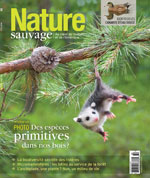
Des prix de présence seront tirés parmi les participants présents au colloque. Le tirage aura lieu lors de l'annonce des lauréats de la meilleure affiche et de la meilleure présentation orale, à la fin du Colloque.
- Abonnement d'un an à la revue Nature Sauvage
 .
.
- Deux exemplaires du livre "Tropical Agroforestry".
Merci à tous nos partenaires!
Activités sportives et sociales
Toute la semaine
- Nous avons la chance d'être à Sherbrooke pendant la Semaine nationale de la vérité et de la réconciliation
 . On vous invite à prendre part aux nombreuses activités sur le campus pendant votre séjour.
. On vous invite à prendre part aux nombreuses activités sur le campus pendant votre séjour.
Mercredi soir le 28
- Activité à Vertige Escalade
 mercredi soir (heure à confirmer). Séance de bloc ou de parcours dans une ancienne église! Apporter votre équipement. Nombre de personnes illimité mais vous devez vous inscrire avant
mercredi soir (heure à confirmer). Séance de bloc ou de parcours dans une ancienne église! Apporter votre équipement. Nombre de personnes illimité mais vous devez vous inscrire avant  . Coût selon votre choix de parcours. Vous devrez payer sur place.
. Coût selon votre choix de parcours. Vous devrez payer sur place.
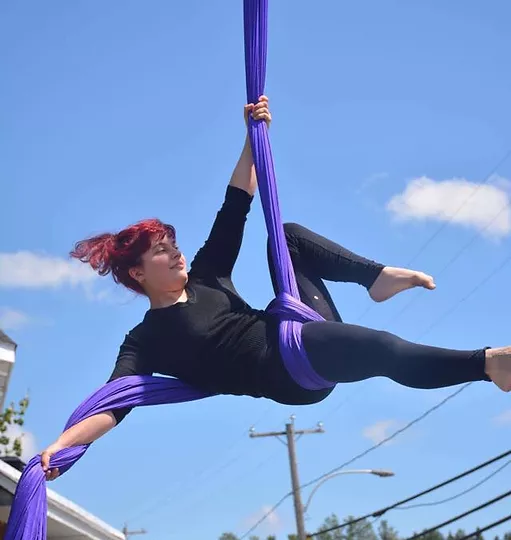
- Cours à l'École de cirque de Sherbrooke
 mercredi de 19h00 à 20h30 - Initiation au cirque aérien encadrée par 2 ou 3 entraîneuses de l'école de cirque de Sherbrooke (dont Sabine St-Jean). Pas besoin d’être déjà fort(e) ou flexible! La plage horaire est réservée exclusivement pour les participants au colloque du CEF. Vêtements requis: chandail ou camisole pouvant être rentré dans les pantalons, pantalons de sport ou leggings. Forte recommandation: pas de shorts. Apporter aussi une bouteille d'eau. Le paiement peut être fait par virement Interac à sabine.st-jean@usherbrooke.ca (réponse à la question de sécurité: cirque (en minuscules)) accompagné d'un courriel de la personne qui veut s'inscrire. 13 personnes minimum - 24 personnes maximum. 20$ par personne. Sabine acceptera seulement les virements à partir de la réception de la 13e inscription (signifiant que le nombre minimum de participants requis est atteint!) et elle transférerai ensuite le montant à l'École de cirque.
mercredi de 19h00 à 20h30 - Initiation au cirque aérien encadrée par 2 ou 3 entraîneuses de l'école de cirque de Sherbrooke (dont Sabine St-Jean). Pas besoin d’être déjà fort(e) ou flexible! La plage horaire est réservée exclusivement pour les participants au colloque du CEF. Vêtements requis: chandail ou camisole pouvant être rentré dans les pantalons, pantalons de sport ou leggings. Forte recommandation: pas de shorts. Apporter aussi une bouteille d'eau. Le paiement peut être fait par virement Interac à sabine.st-jean@usherbrooke.ca (réponse à la question de sécurité: cirque (en minuscules)) accompagné d'un courriel de la personne qui veut s'inscrire. 13 personnes minimum - 24 personnes maximum. 20$ par personne. Sabine acceptera seulement les virements à partir de la réception de la 13e inscription (signifiant que le nombre minimum de participants requis est atteint!) et elle transférerai ensuite le montant à l'École de cirque.
Jeudi matin le 29
- Fun Run - Petit parcours de 3 km autour du Lac des Nations à faire autant de fois que vous le désirez. Rendez-vous avec André jeudi à 7h15 (matin) au Marché de la Gare, tout près du Grand Hôtel Times. Stationnement gratuit avant 9h00. Voir le plan
 . Nombre de personnes illimité. Gratuit.
. Nombre de personnes illimité. Gratuit.
Autres activités
- Ballades à pied dans Sherbrooke - On vous suggère la Promenade de la gorge de la rivière Magog
 d'une longueur de 1,7 km et d'une durée approximative de 30 minutes. Difficulté: Facile. C'est illuminé le soir en plus! Deux entrées: Porte de la Gorge (rue Richmond) et Porte des Fabriques (rue Frontenac).
d'une longueur de 1,7 km et d'une durée approximative de 30 minutes. Difficulté: Facile. C'est illuminé le soir en plus! Deux entrées: Porte de la Gorge (rue Richmond) et Porte des Fabriques (rue Frontenac).
Transport et covoiturage
Se rendre à Sherbrooke - Un service de transport et de covoiturage sera coordonné par chacun des pôles du CEF. Selon la demande, certains pôles loueront des minibus pour transporter les participants. Plus vite vous vous inscrivez, plus vous avez de chances de trouver un transport. La priorité sera donnée aux membres du CEF. Si vous souhaitez profiter d'un transport ou si vous souhaitez offrir des places en covoiturage dans votre propre voiture, remplissez ce formulaire ![]() .
.
Se rendre sur le Campus - Le campus devrait être passablement occupé durant la tenue du Colloque et les espaces de stationnement seront limités. Nous vous suggérons d'utiliser le transport collectif pour vous déplacer entre votre hébergement et le campus.
Près de 180 laissez-passers pour les autobus de la Société de transport de Sherbrooke ![]() (STS), fournis par Destination Sherbrooke
(STS), fournis par Destination Sherbrooke ![]() , seront distribués par des bénévoles dans le hall d’entrée du Grand Times Hôtel entre 18h00 et 20h00 lundi soir et mardi soir et de l’Hôtel Le Président aux mêmes heures mardi soir. Les laissez-passers restants seront disponibles à la table d’accueil des ateliers du mardi et à la table d'accueil du colloque (au Centre culturel) à partir de mercredi matin. Ces laissez-passers sont valides pour toutes la durée du Colloque.
, seront distribués par des bénévoles dans le hall d’entrée du Grand Times Hôtel entre 18h00 et 20h00 lundi soir et mardi soir et de l’Hôtel Le Président aux mêmes heures mardi soir. Les laissez-passers restants seront disponibles à la table d’accueil des ateliers du mardi et à la table d'accueil du colloque (au Centre culturel) à partir de mercredi matin. Ces laissez-passers sont valides pour toutes la durée du Colloque.
Le transport collectif est un peu compliqué à partir de l’Hôtel Le Président. Nous invitons tous ceux qui viennent en voiture et qui résident à cet hôtel à essayer de prendre un maximum de passagers avec eux pour se rendre sur le campus et même, si possible, à effectuer quelques aller-retours pour accommoder les participants qui n’ont que le transport collectif comme option.
Stationner sur le Campus - Si vous devez absolument vous stationner sur le campus ![]() , nous vous recommandons d’arriver avant 8h00. Des stationnements supplémentaires, avec un service de navette gratuite, ont été mis en place par l'Université de Sherbrooke en périphérie du Campus. Ces stationnements sont situé à l’aréna du Mont-Sainte-Anne
, nous vous recommandons d’arriver avant 8h00. Des stationnements supplémentaires, avec un service de navette gratuite, ont été mis en place par l'Université de Sherbrooke en périphérie du Campus. Ces stationnements sont situé à l’aréna du Mont-Sainte-Anne ![]() , Chemin Ste-Catherine et au parc Lucien-Blanchard
, Chemin Ste-Catherine et au parc Lucien-Blanchard ![]() (à privilégier), rue Cabana. Les navettes circulent de 7h30 à 17h30.
(à privilégier), rue Cabana. Les navettes circulent de 7h30 à 17h30.
Si vous avez des questions, contactez votre responsable de pôle:
- Outaouais (UQO) : Benoît Gendreau-Berthiaume

- Québec (Université Laval, UQAC et UQAR) : Marta Alonso-Garcia
- Abitibi-Témiscamingue : Juanita Carolina Rodriguez Rodriguez
- Montréal : Luc Lauzon
Hébergement et restaurants
Il n'y a pas beaucoup d'hébergement près de l'Université de Sherbrooke. Le CEF a réservé des blocs de chambres à tarif réduit dans deux hôtels. Réservez tôt pour en profiter!
Le Grand Times Hotel ![]() situé entre le centre-ville et l'Université
situé entre le centre-ville et l'Université ![]() (45 minutes à pied). 30 chambres réservées (plusieurs sont déjà prises). Vous devez utiliser le code UDS260922 pour obtenir le prix négocié de 165.99$ par chambre/nuit, occupation simple + taxes, petit-déjeuner inclus. Piscine intérieure et centre de conditionnement physique disponible. Il y a un frais de 15$ par personne supplémentaire. Le stationnement est de 10$/jour + taxes. Une annulation de la réservation sans frais jusqu’à 7 jours avant la date d’arrivée. Les réservations doivent être faites par téléphone (1-888-999-3499) ou par courriel (reservationsherbrooke@timeshotel.ca) au plus tard le 2 septembre pour obtenir le tarif réduit rattaché au code. Les réservations en ligne n'acceptent pas le code.
(45 minutes à pied). 30 chambres réservées (plusieurs sont déjà prises). Vous devez utiliser le code UDS260922 pour obtenir le prix négocié de 165.99$ par chambre/nuit, occupation simple + taxes, petit-déjeuner inclus. Piscine intérieure et centre de conditionnement physique disponible. Il y a un frais de 15$ par personne supplémentaire. Le stationnement est de 10$/jour + taxes. Une annulation de la réservation sans frais jusqu’à 7 jours avant la date d’arrivée. Les réservations doivent être faites par téléphone (1-888-999-3499) ou par courriel (reservationsherbrooke@timeshotel.ca) au plus tard le 2 septembre pour obtenir le tarif réduit rattaché au code. Les réservations en ligne n'acceptent pas le code.
Hôtel Le Président ![]() situé près des autoroutes à 3,8 km de l'Université
situé près des autoroutes à 3,8 km de l'Université ![]() (48 minutes à pied). Vous devez utiliser le code CEF22 en ligne ou le folio 433393 au téléphone pour obtenir le prix négocié de 149.95$ par chambre/nuit + taxes. Stationnement gratuit. Les réservations peuvent être annulées sans frais jusqu’à 18h00 le jour avant l’arrivée. Pour toute annulation tardive on non-présentation, l’équivalent de la première nuit sera facturé. Les réservations doivent être faites au plus tard le 17 septembre pour obtenir le tarif réduit rattaché au code.
(48 minutes à pied). Vous devez utiliser le code CEF22 en ligne ou le folio 433393 au téléphone pour obtenir le prix négocié de 149.95$ par chambre/nuit + taxes. Stationnement gratuit. Les réservations peuvent être annulées sans frais jusqu’à 18h00 le jour avant l’arrivée. Pour toute annulation tardive on non-présentation, l’équivalent de la première nuit sera facturé. Les réservations doivent être faites au plus tard le 17 septembre pour obtenir le tarif réduit rattaché au code.
Les étudiants CEF devront défrayer les coût d'hébergement eux-mêmes (en groupe de 2, 3 ou 4) ou s'entendre avec leur superviseur.
D'autres options d'hébergement avec une sélection de restaurant sont disponibles dans ce document ![]() préparé par Richard Fournier.
préparé par Richard Fournier.
Pour les réservation d'hôtel vous pouvez également utiliser les sites comme Booking.com ![]() , Hotels.com
, Hotels.com ![]() , Tripadviser.ca
, Tripadviser.ca ![]() , Expedia.ca
, Expedia.ca ![]() , Priceline.com
, Priceline.com ![]() , Trivago.ca
, Trivago.ca ![]() , Airbnb
, Airbnb ![]() ou Hotwire.com
ou Hotwire.com ![]() si vous êtes économes, aventuriers et avez une voiture!
si vous êtes économes, aventuriers et avez une voiture!
Code de conduite
Le comité organisateur du colloque annuel du Centre d'étude de la forêt s'engage à fournir un environnement sûr et inclusif à ses participants et participantes, conférenciers et conférencières, partenaires, personnel et bénévoles afin d'assurer une expérience agréable à toutes et tous durant l'événement.
Puisque que nous discutons de la science selon nos différentes perspectives, cultures et bases de connaissances, nous souhaitons favoriser un environnement ouvert et inclusif pour tous les participants et participantes. Notre objectif est de créer un environnement où chacun et chacune se sent bienvenu de participer, de prendre la parole, de poser des questions et d'engager la conversation. Nous attendons des membres qu'ils soient intentionnels et réfléchis dans leurs interactions afin de garantir que l'événement reflète un environnement culturellement sûr pour tous.
Nous ne tolérerons aucun harcèlement d'aucune sorte lors de ce colloque. Un comportement ou un discours inapproprié ne sera accepté dans les lieux du colloque, y compris lors des conférences, des ateliers, des tables-rondes et des événements sociaux. Ceux et celles qui enfreindraient ces règles seront expulsés de la conférence sans remboursement, à la discrétion du comité organisateur de la conférence.
Si vous avez des questions ou avez été témoin d'un comportement inapproprié, veuillez SVP en informer un des membres du comité EDI (Juanita Rodriguez ou Marta Alonso-Garcia). Toutes informations transmises sera traitées avec discrétion.
Consignes COVID-19
L'un des moyens les plus efficaces de se protéger et de réduire la transmission de la COVID-19 dans des évènements publics est de porter un couvre-visage (surtout lorsque la distance de 2m ne peut être respectée). Afin de mieux protéger toutes les personnes participant au Colloque annuel du CEF, des couvre-visage (masques) seront requis dans les lieux du Colloque (Centre culturel, salles de cours, etc.) sauf pour de brefs moments lors de repas et des pauses. Veuillez noter que le port du masque ne sera pas requis pour les présentateurs durant la période de leur allocution au lutrin. Si vous n’avez pas de couvre-visage, il y en aura de disponible sur place. Merci de porter un couvre-visage (masque) en tout temps.
Si vous avez des symptômes de la COVID-19 ![]() , SVP vous abstenez-vous de participer au colloque.
, SVP vous abstenez-vous de participer au colloque.
Accès au réseau sans fil
Réseau Eduroam - Normalement, tous les étudiants qui se sont déjà branchés au réseau sans fil Eduroam de leur propre université devraient pouvoir se brancher sur le réseau Eduroam de l'Université de Sherbrooke sans configuration supplémentaire. Si ce n’est pas votre cas, nous vous conseillons de configurer votre portable AVANT de venir au colloque. Les instructions de configuration sont pratiquement identiques d'une université à l'autre mais voici tout de même les instructions fournies par chaque université: UQAM ![]() , Université Laval
, Université Laval ![]() , Université de Sherbrooke
, Université de Sherbrooke ![]() , Université de Montréal
, Université de Montréal ![]() , McGill
, McGill ![]() , Concordia
, Concordia ![]() , UQAT
, UQAT ![]() , UQAR
, UQAR ![]() , UQO
, UQO ![]() , UQTR
, UQTR ![]() , TELUQ
, TELUQ ![]() .
.
Réseau ZAP - Pour les personnes qui n'ont pas accès à Eduroam, l'Université de Sherbrooke offre le réseau ZAP ![]() . Sélectionnez simplement ce réseau dans la liste des réseaux sans fil disponibles à partir de votre ordinateur portable ou votre appareil mobile et vous serez redirigé vers une page de connexion dès que vous tenterez d'accèder au web.
. Sélectionnez simplement ce réseau dans la liste des réseaux sans fil disponibles à partir de votre ordinateur portable ou votre appareil mobile et vous serez redirigé vers une page de connexion dès que vous tenterez d'accèder au web.
Appel de conférences et d'affiches
L'appel de proposition pour les présentations orales ou par affiche est terminé depuis le 1er août!
Tous les membres du CEF sont invités à présenter les résultats de leurs travaux par le biais d'une présentation orale ou d'une affiche. Seuls les résumés présentant des résultats seront acceptés pour les présentations orales. Les projets de recherche les plus avancés des étudiants.es et des postdoctorants.es du CEF seront priorisés.es par le comité de sélection. La date limite pour soumettre une proposition est le 1er août 2022.
Le CEF encourage cette année les membres à présenter sur des thèmes un peu en marge des axes de recherche traditionnels du CEF : la santé, la société, les arts, la géomatique et la télédétection. Toujours évidemment en lien avec la forêt. Les thèmes classiques du CEF sont aussi bien sûr les bienvenus, que ce soit en français ou en anglais.
Le résumé doit contenir entre 250 et 300 mots dans la langue avec laquelle sera fait la présentation (anglais ou français). Les résumés qui ne respecteront pas ces conditions seront refusés. Les résumés ne pourront pas être modifiés après la date limite de soumission.
Instructions spécifiques pour les présentations orales - Les présentations orales durent 15 minutes et sont suivies d'une période de questions de 5 minutes. Les fichiers de présentations devront être en format PDF ou Microsoft PowerPoint. La version 2016 de Microsoft PowerPoint sera installée sur les ordinateurs. Vous pouvez donc utiliser des versions antérieures si vous n'avez pas la version 2016. Si vous avez des vidéos ou d'autres animations, assurez-vous que ces fichiers soient lisibles sur une machine Windows ne nécessitant pas l'installation d'un logiciel particulier. Aussi, comme nous ne pouvons garantir l'accès à une connexion internet, il est important d'amener une copie de votre présentation sur clé USB. Par conséquent, les systèmes de présentations en ligne ne devraient pas être utilisées (Prezi et autres).
Afin d'assurer le bon déroulement des sessions, AUCUN branchement d'ordinateur personnel ne sera permis. Les utilisateurs de MAC devront s'assurer d'avoir une version compatible Windows.
Instructions spécifiques pour les affiches - Les affiches devront être soit:
- en format PAYSAGE avec une taille maximale de 48 pouces de large par 36 pouces de haut (122 cm par 91.5 cm) ou
- en format PORTRAIT avec une taille maximale de 24 pouces de large par 36 pouces de haut (61 cm par 91.5 cm).
Lisez cet article ![]() dans Nature pour améliorer la qualité de vos affiches.
dans Nature pour améliorer la qualité de vos affiches.
Communiquez avec Stéphane Daigle si vous avez des questions sur les communication orales et les affiches.
Concours
Seuls les étudiants et étudiantes membres du CEF de niveau maîtrise ou doctorat sont éligibles au concours. Un jury déterminera les meilleures présentations orales, alors que les meilleures affiches seront sélectionnées par un vote du public. Pour voter, les participants et participantes du Colloque devront remplir un bulletin de vote qu'ils trouveront dans leur cocarde.
Meilleure présentation orale
- Un premier prix de 1000 $ versé par le CEF à la meilleure présentation
Vanessa Di Maurizio pour sa présentation intitulée : L’effet de la diversité sur la croissance individuelle des arbres: comment les espèces réagissent-elles à la diversité de leur voisinage? ![]()
- Un deuxième prix de 500 $ versé par le CEF à la seconde meilleure présentation
Chloé Morineau pour sa présentation intitulée : Le réchauffement climatique comme bouc émissaire : quantifier l'importance du climat dans la rétraction vers le nord de l'aire de distribution du caribou forestier au Québec depuis 1850 ![]()
- Un troisième prix de 250 $ versé par le CEF à la troisième meilleure présentation
Andréanne Girard-Lemieux pour sa présentation intitulée : La gouvernance partagée pour la gestion des aires protégées: une avenue possible pour améliorer les pratiques de gestion? ![]()
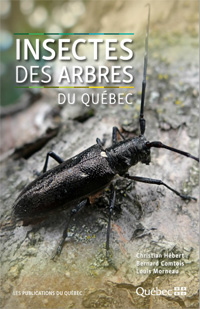
Meilleure affiche
- Un premier prix de 500 $ versé par le CEF à la meilleure affiche
Kloé Chagnon-Taillon pour son affiche intitulée : Combiner les arts et la science pour cartographier les territoires autochtones ![]()
- Un deuxième prix de 250 $ versé par le CEF à la seconde meilleure affiche
Laurie Dupont-Leduc pour son affiche intitulée : La diversité des espèces d'arbres façonne la structure du couvert forestier boréal ![]()
- Un troisième prix de 100 $ versé par le CEF à la troisième meilleure affiche
Sarah Tardif pour son affiche intitulée : Urban tree pollen: a step forward in increasing capacity to predict identity and concentrations ![]()
L’Association forestière du sud du Québec (AFSQ ![]() ) offrira le livre « Insectes des arbres du Québec
) offrira le livre « Insectes des arbres du Québec ![]() » et un abonnement d'un an à la revue « Le progrès forestier
» et un abonnement d'un an à la revue « Le progrès forestier ![]() » avec la possibilité d'écrire un article dans la revue au lauréat de la meilleure affiche ÉTUDIANTE.
» avec la possibilité d'écrire un article dans la revue au lauréat de la meilleure affiche ÉTUDIANTE.
Appel de proposition d'ateliers de formation
L'appel de proposition pour les ateliers est terminé depuis le 1er août!
Il y aura cette année une journée supplémentaire (mardi le 27 septembre) dédiée à des ateliers de formation.
Nous sollicitons donc votre participation. Que vous soyez chercheur.e-régulier, chercheur.e associé.e, professionnel.le, postdoctorant.e, étudiant.e à la maîtrise ou au doctorat ou même non-membre du CEF, vous pouvez offrir un atelier de formation d'une journée ou d'une demi-journée. La date limite pour soumettre un atelier est le 1er août 2022.
Packages R, programmation, logiciels spécialisés, théorie en écologie, technique de terrain, etc... Les formations pratiques et théoriques seront acceptées. Tout ce qui peut s'enseigner en 4 ou 8 heures et qui est d'intérêt pour les membres du CEF sera considéré. Dans le cas où le nombre de proposition dépasserait le nombre de locaux disponibles, un comité sélectionnera les plus intéressantes/populaires. Nous essaierons toutefois d'accommoder le plus d'ateliers possible. Pour les ateliers de type informatique, nous devrions disposer de quelques laboratoires informatiques. Ces labos seront réservés en priorité pour les ateliers impliquants des logiciels avec licence. Pour les ateliers impliquants des logiciels open source, nous préférons que les participants apportent leur ordinateurs portables avec le logiciel déjà installé. Ceci rend possible la tenue d'ateliers informatiques dans des salles de classe conventionnelles.
Les personnes responsables des ateliers sélectionnés n'auront pas à payer les frais d'inscription pour le Colloque. Un maximum de deux responsables par atelier pourront profiter de ce laissez-passer.
Communiquez avec Pierre Racine si vous avez des questions sur les ateliers.





